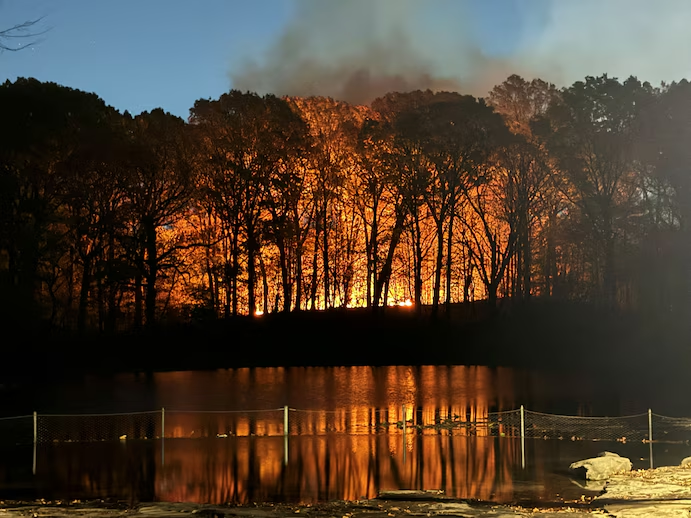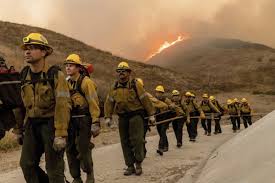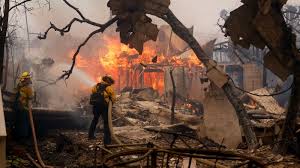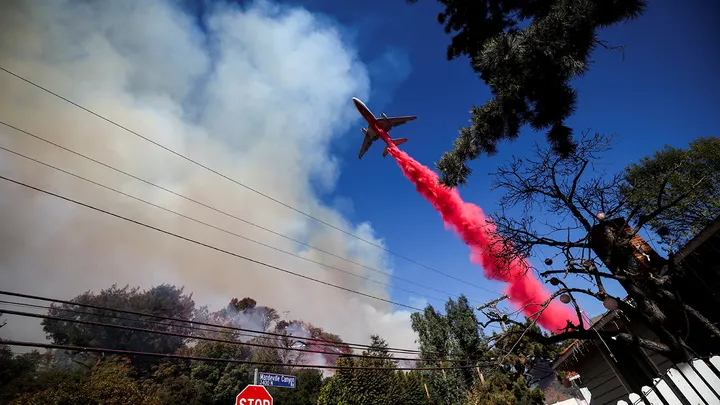Franklin Fire in Malibu is burning an area the size of five football fields every minute
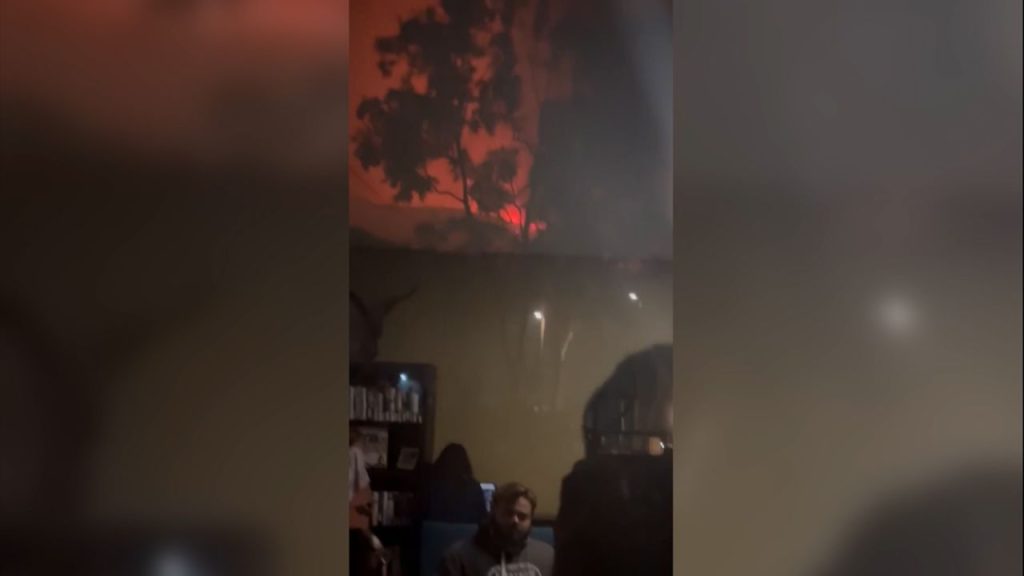
The Franklin Fire, which erupted in Malibu, California, has become one of the most devastating wildfires in recent history. It is rapidly spreading, consuming large swaths of land at an alarming rate—an area the size of five football fields every minute. As fire crews battle to control the flames, the scale of the destruction is staggering. Thousands of residents have been evacuated, and the fire continues to threaten communities, wildlife, and natural resources.
The Franklin Fire, which ignited in early December 2024, has already scorched thousands of acres of land. Malibu, known for its scenic beauty and luxurious properties along the Pacific coast, is now facing an unprecedented challenge as wildfires ravage the area. Firefighters are working tirelessly, battling extreme conditions that include dry vegetation, high winds, and an ongoing drought. Despite their efforts, the fire’s intensity and the rapid speed at which it is spreading make it a formidable adversary.
According to fire officials, the Franklin Fire is expanding at a rate of five football fields every minute, which equates to roughly 1.5 acres per minute. This extraordinary speed underscores the ferocity of the blaze and the difficulty faced by emergency responders. The combination of Santa Ana winds and the region’s dry conditions has created the perfect storm for the wildfire to grow out of control. Firefighters, who are stretched thin by the growing number of fires across California, are working around the clock to contain the fire, but with limited success so far.
Malibu, with its rugged terrain and densely vegetated hillsides, is particularly vulnerable to wildfires. The region has long been prone to fires due to its dry climate and the presence of chaparral, which acts as highly flammable fuel for fires. In addition, the ongoing effects of climate change have exacerbated the frequency and severity of wildfires in California. The Franklin Fire is just one of many fires that have ravaged the state in recent years, but its rapid spread and the scale of its destruction make it especially concerning.
The fire has forced the evacuation of thousands of residents in Malibu and nearby areas. Many people have been forced to flee their homes at a moment’s notice, leaving behind everything in the hope of finding safety. The mandatory evacuation orders are not only for residents but also for visitors to the area, as the fire has moved dangerously close to populated regions. While some residents have managed to escape unscathed, others have lost their homes, as the fire continues to tear through Malibu’s neighborhoods.
In addition to the physical threat to residents and property, the Franklin Fire is causing significant environmental damage. The fire is threatening critical wildlife habitats, including areas that are home to endangered species. The fire’s speed and intensity have made it difficult for firefighters to control, and the risk of long-term environmental consequences is high. The region’s delicate ecosystems, including coastal scrublands and oak woodlands, are under threat as the fire destroys large portions of the landscape.
Air quality in the area has also deteriorated significantly due to the smoke and ash from the fire. The thick haze has spread to neighboring regions, including parts of Los Angeles, affecting millions of people. For those with respiratory issues, such as asthma or other lung conditions, the poor air quality poses a serious health risk. Even residents not directly in the fire’s path are advised to remain indoors to avoid exposure to the toxic air.
In response to the Franklin Fire, local, state, and federal agencies have mobilized resources to contain the blaze. Firefighters from across the state, supported by aerial units, are making every effort to create firebreaks and stop the fire’s spread. However, with unpredictable weather conditions and the fire continuing to grow, containing the blaze remains a significant challenge. The region’s rugged terrain and limited access to certain areas only add to the complexity of the situation.
The Franklin Fire is yet another reminder of the growing threat posed by wildfires in California. Experts warn that the state’s fire season is becoming longer and more unpredictable due to climate change. The increase in extreme heat events, combined with ongoing drought conditions, makes the state increasingly vulnerable to devastating wildfires. While firefighting efforts are ongoing, the long-term solutions to preventing such fires from happening more frequently will require addressing the underlying environmental factors driving their intensity.
As the Franklin Fire continues to burn, the focus remains on protecting lives, homes, and the natural landscape. The coming days will be critical as fire crews work to contain the blaze and prevent further destruction. In the meantime, communities in Malibu and surrounding areas are left to grapple with the devastating impact of one of the fastest-moving and most destructive wildfires the state has ever seen.


